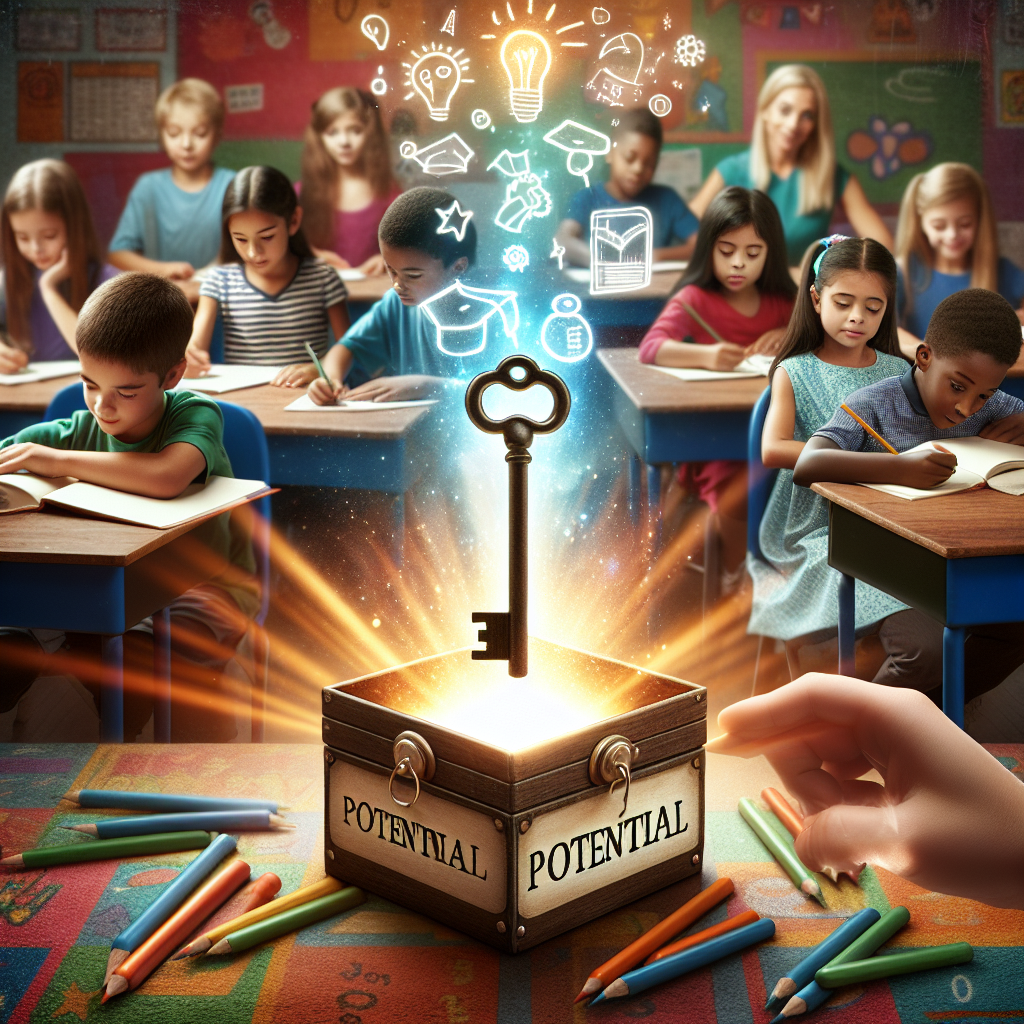
Unlocking Potential: Creating a Supportive Environment for Self-Esteem in Learning-Disabled Kids
Introduction
Imagine a classroom filled with laughter, curiosity, and a strong sense of belonging. Now envision a child in the corner, hesitant and unsure, struggling with learning disabilities while desperately wanting to fit in. The world today is starting to understand that education isn’t a one-size-fits-all experience. Unlocking Potential: Creating a Supportive Environment for Self-Esteem in Learning-Disabled Kids is a critical mission, as self-esteem plays a pivotal role in a child’s academic journey and overall development. This article dives deep into how caregivers, educators, and communities can foster an environment that nurtures self-esteem in children with learning disabilities. It isn’t merely an act of kindness; it’s an essential strategy to unlock their vast potential.
Understanding Learning Disabilities
Defining Learning Disabilities
Learning disabilities (LD) are neurological disorders that affect a person’s ability to receive, process, and express information. Conditions such as dyslexia, ADHD, and dyscalculia fall under this umbrella. Despite their challenges, children with LD possess unique strengths and capabilities that often get overshadowed by their difficulties.
The Importance of Self-Esteem
Self-esteem pertains to one’s perception of their own worth. For learning-disabled kids, a robust sense of self-esteem can be a strong predictor of their academic performance and social interactions. Conversely, low self-esteem can lead to academic failure, behavioral issues, and even mental health disorders. A nurturing environment can significantly enhance their self-esteem, allowing them to flourish.
Creating a Supportive Environment
Creating an environment conducive to building self-esteem requires intentional strategies and practices. Here are some effective approaches:
1. Fostering Emotional Safety
Creating an emotionally secure environment is the foundation of self-esteem. Children must feel safe to express themselves without fear of judgment. Regular check-ins, open communications, and understanding the unique challenges faced by these children can foster such an environment.
Case Study: The Safe Space Initiative
In a middle school in California, a program called Safe Space was launched. Teachers were trained to recognize emotional triggers among students with learning disabilities. They created "safe zones" within the school where kids could retreat when overwhelmed. This initiative led to a 25% increase in overall mental wellness reports among these students.
| Statistics Before and After Safe Space Initiative | ||
|---|---|---|
| Parameters | Before | After |
| Student Well-Being Reports | 45% | 70% |
| Instances of Classroom Disruption | 15% | 5% |
2. Encouraging Collaborative Learning
Children with learning disabilities benefit greatly from working in pairs or small groups. Collaborative learning helps normalize differences and fosters empathy among peers. These settings allow for personalized support and the development of social skills.
Case Study: Peer-Buddy Program
At an elementary school in New York, the Peer-Buddy Program paired students with learning disabilities with their peers. This initiative not only improved academic performance but also enhanced friendships, fostering a less isolating environment.
3. Celebrating Small Wins
Recognition goes a long way in boosting self-esteem. Establishing a culture where achievements, no matter how small, are celebrated can have a significant positive impact.
Case Study: Weekly Recognition Ceremony
In a public school in Chicago, a weekly recognition ceremony was introduced. Each child was praised for their unique contributions, creating a culture of support and encouragement. Students reported feeling more confident and motivated, with a 30% increase in classroom participation.
Tools and Techniques for Educators and Caregivers
To further enhance self-esteem in learning-disabled kids, caregivers and educators can adopt various tools and techniques.
1. Use of Positive Language
The language used when communicating with children can significantly impact their self-esteem. Encouragement and positivity help them recognize their value.
2. Incorporating Multi-Sensory Learning
Multi-sensory learning techniques engage various senses, making learning more accessible for children with different learning styles. This method also helps reinforce their understanding and retention of information.
3. Promoting Emotional Intelligence
Teaching emotional intelligence fosters better relationships, helps children understand and manage their emotions, and encourages empathy toward others.
The Role of Parents and Guardians
Parents and guardians play a critical role in cultivating self-esteem in learning-disabled children. Here’s how they can help:
1. Open Communication
Encouraging children to express their feelings can build trust and confidence. Parents should promote open conversations about challenges and successes.
2. Promoting Independence
Allowing children to make choices and take responsibility for areas within their capabilities helps develop a sense of autonomy, which is vital for self-esteem.
Community Involvement
Communities can also lend a hand in Unlocking Potential: Creating a Supportive Environment for Self-Esteem in Learning-Disabled Kids.
1. Community Programs
Programs that include mentorship opportunities can create connections between children and role models who can inspire and motivate.
2. Inclusive Events
Organizing inclusive community events can provide opportunities for social interaction and build networks that support children’s self-esteem.
Measuring Success
Measuring the success of the supportive environment is crucial for continuous improvement.
1. Feedback Mechanisms
Feedback from students, parents, and educators can provide valuable insights into the effectiveness of the initiatives in place.
2. Progress Tracking
Keeping track of individual child’s progress in both academic and emotional well-being is crucial for understanding the overall effectiveness of the support system.
Conclusion
Building self-esteem in learning-disabled kids is not just beneficial—it is essential. By Unlocking Potential: Creating a Supportive Environment for Self-Esteem in Learning-Disabled Kids, we can equip them to thrive academically and socially. When educators, caregivers, and communities come together with compassion, creativity, and commitment to supporting these children, we foster a world where every child can discover their strengths and confidently chase their dreams.
Frequently Asked Questions (FAQs)
1. What are some signs of low self-esteem in children with learning disabilities?
Signs may include avoiding tasks, negative self-talk, withdrawing from peers, and frequent comparisons to others.
2. How can schools support self-esteem among learning-disabled kids?
Schools can implement inclusive teaching methods, celebrate achievements, and promote a culture of collaboration.
3. What role does peer interaction play in building self-esteem?
Positive peer interactions provide social support, promote empathy, and help normalize differences, fostering self-worth.
4. How can parents encourage self-esteem at home?
Parents can practice active listening, focus on strengths, and provide opportunities for independence and responsibility.
5. What resources are available for children with learning disabilities?
Local support groups, educational programs tailored to learning disabilities, and online communities can offer assistance and advice.
Final Thoughts
The journey toward Unlocking Potential: Creating a Supportive Environment for Self-Esteem in Learning-Disabled Kids is ongoing and requires collaboration across all facets of a child’s life. By fostering environments rich in understanding, encouragement, and celebration of achievements, we can ensure that no child is left behind. Each step taken toward empowerment becomes a stepping stone toward a brighter future, where every child shines in their unique way.
















